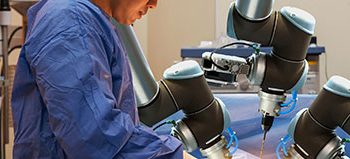This report aims to provide detailed insights into the global IVD Market.
It provides valuable information on the type, procedure, application, and
region in the market. Furthermore, the information for these segments, by
region, is also presented in this report. Leading players in the market are
profiled to study their product offerings and understand the strategies
undertaken by them to be competitive in this market.
Expected
Revenue Growth:
The In Vitro Diagnostics Market size is expected to be valued at USD 61.7 billion in 2020 and projected to
reach USD 77.9
billion by
2025, growing at a CAGR of 4.8% during 2020-2025.
Download PDF Brochure:
https://www.marketsandmarkets.com/pdfdownloadNew.asp?id=55486975
Key Factors Driving Market Growth:
The demand for In-Vitro Diagnostic products due to COVID-19 pandemic is
expected to grow mainly due to factors such as a sharp rise in market demand
for PCR, NGS, serology based rapid-test products, the supportive regulatory
landscape for product development & commercialization, and a sharp rise in
target patient population. These factors have prompted market players to
improve and strengthen their current manufacturing and distribution
capabilities as well as to focus on product commercialization & upgrade.
Based
on technology, the PCR segment is expected to hold the largest share of the
market in 2020
Based
on technology, the in-vitro diagnostics market is segmented into PCR, NGS,
ELISA, Rapid-tests, clinical chemistry, hematology, hemostasis, urinalysis,
microbiology testing, and others. The PCR segment is expected to hold the
largest share of the global in-vitro diagnostics industry in 2020 – H1. Factors
such as the increasing patient emphasis on effective and early patient
screening, continued commercialization of novel COVID screening platforms by
major players, early efforts of key players to address supply chain
bottlenecks, and easy availability of controls & standards are driving the
growth of this segment.
The US to account for the largest share of the in-vitro diagnostics industry
in 2020
The US is expected to account for the largest share of the in-vitro
diagnostics market in 2020, followed by Europe. This can primarily be attributed to
the continuous commercialization of innovative diagnostic products coupled with
ongoing advancements in the field of gene & immunoassay based products, the
recent discovery of genetic biomarkers & their clinical role in immunoassay
testing, supportive government policies & their emphasis on novel product
development, and the significant expansion of target patient population.
As of 2019, some of the prominent players in the in-vitro diagnostics market
are Roche Diagnostics (Switzerland),
Abbott Laboratories (US), Thermo Fisher Scientific (US), Becton, Dickinson and
Company (US), Bio-Rad Laboratories (US), Biomerieux (France), and QIAGEN (Germany), among
others.
Request Sample Report:
https://www.marketsandmarkets.com/requestsampleNew.asp?id=55486975
Roche Diagnostics is the top player in the global in-vitro
diagnostics market. Roche Diagnostics was the leading player in the IVD market.
The company’s leading position in the IVD market is attributed to its diverse
product portfolio across clinical chemistry, immunochemistry, molecular
diagnostics, and tissue diagnostics products. The company also has a strong
geographic presence across major healthcare markets in North America, Europe,
Asia, as well as MEA, which enables it to cater to a large consumer base
worldwide. To maintain its leadership position in the global IVD market, the
company mainly focuses on product commercialization, developmental
collaborations, and product distribution partnerships.
The study involved four major
activities in estimating the current size of the global in-vitro diagnostics
market as well as impact assessment of the COVID-19 pandemic at the country
level. Exhaustive secondary research was conducted to collect information on
the market and its different subsegments. The next step was to validate these
findings, assumptions, and sizing with industry experts across the value chain
through primary research. Both top-down and bottom-up approaches were employed
to estimate the total market size. After that, market breakdown and data
triangulation were used to estimate the market size of segments and
subsegments.

